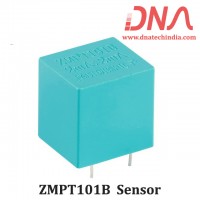The Full Wave Rectifier |
|||
|
In the previous Power Diodes tutorial we discussed ways of reducing the ripple or voltage variations on a direct DC voltage by connecting capacitors across the load resistance. While this method may be suitable for low power applications it is unsuitable to applications which need a "steady and smooth" DC supply voltage. One method to improve on this is to use every half-cycle of the input voltage instead of every other half-cycle. The circuit which allows us to do this is called a Full Wave Rectifier. |
|||
|
Like the half wave circuit, a full wave rectifier circuit produces an output voltage or current which is purely DC or has some specified DC component. Full wave rectifiers have some fundamental advantages over their half wave rectifier counterparts. The average (DC) output voltage is higher than for half wave, the output of the full wave rectifier has much less ripple than that of the half wave rectifier producing a smoother output waveform. |
|||
|
In a Full Wave Rectifier circuit two diodes are now used, one for each half of the cycle. A transformer is used whose secondary winding is split equally into two halves with a common centre tapped connection, (C). This configuration results in each diode conducting in turn when its anode terminal is positive with respect to the transformer centre point C producing an output during both half-cycles, twice that for the half wave rectifier so it is 100% efficient as shown below. |
|||
|
|
|||
Full Wave Rectifier Circuit |
|||
|
|
|||
|
The full wave rectifier circuit consists of two power diodes connected to a single load resistance (RL) with each diode taking it in turn to supply current to the load. When point A of the transformer is positive with respect to point C, diode D1 conducts in the forward direction as indicated by the arrows. When point B is positive (in the negative half of the cycle) with respect to point C, diode D2 conducts in the forward direction and the current flowing through resistor R is in the same direction for both half-cycles. As the output voltage across the resistor R is the phasor sum of the two waveforms combined, this type of full wave rectifier circuit is also known as a "bi-phase" circuit. |
|||
|
As the spaces between each half-wave developed by each diode is now being filled in by the other diode the average DC output voltage across the load resistor is now double that of the single half-wave rectifier circuit and is about 0.637Vmax of the peak voltage, assuming no losses. |
|||
|
|
|||
|
Where: VMAX is the maximum peak value in one half of the secondary winding and VRMS is the rms value. |
|||
|
The peak voltage of the output waveform is the same as before for the half-wave rectifier provided each half of the transformer windings have the same rms voltage value. To obtain a different DC voltage output different transformer ratios can be used. The main disadvantage of this type of full wave rectifier circuit is that a larger transformer for a given power output is required with two separate but identical secondary windings making this type of full wave rectifying circuit costly compared to the "Full Wave Bridge Rectifier" circuit equivalent. |
|||
|
|
|||
The Full Wave Bridge Rectifier |
|||
|
Another type of circuit that produces the same output waveform as the full wave rectifier circuit above, is that of the Full Wave Bridge Rectifier. This type of single phase rectifier uses four individual rectifying diodes connected in a closed loop "bridge" configuration to produce the desired output. The main advantage of this bridge circuit is that it does not require a special centre tapped transformer, thereby reducing its size and cost. The single secondary winding is connected to one side of the diode bridge network and the load to the other side as shown below. |
|||
|
|
|||
The Diode Bridge Rectifier |
|||
|
|
|||
|
The four diodes labelled D1 to D4 are arranged in "series pairs" with only two diodes conducting current during each half cycle. During the positive half cycle of the supply, diodes D1 and D2 conduct in series while diodes D3 and D4 are reverse biased and the current flows through the load as shown below. |
|||
|
|
|||
The Positive Half-cycle |
|||
|
|
|||
|
During the negative half cycle of the supply, diodes D3 and D4 conduct in series, but diodes D1 and D2 switch "OFF" as they are now reverse biased. The current flowing through the load is the same direction as before. |
|||
|
|
|||
The Negative Half-cycle |
|||
|
|
|||
| As the current flowing through the load is unidirectional, so the voltage developed across the load is also unidirectional the same as for the previous two diode full-wave rectifier, therefore the average DC voltage across the load is 0.637Vmax. However in reality, during each half cycle the current flows through two diodes instead of just one so the amplitude of the output voltage is two voltage drops ( 2 x 0.7 = 1.4V ) less than the input VMAX amplitude. The ripple frequency is now twice the supply frequency (e.g. 100Hz for a 50Hz supply) | |||
Although we can use four individual power diodes to make a full wave bridge rectifier, pre-made bridge rectifier components are available "off-the-shelf" in a range of different voltage and current sizes that can be soldered directly into a PCB circuit board or be connected by spade connectors. The image to the right shows a typical single phase bridge rectifier with one corner cut off. This cut-off corner indicates that the terminal nearest to the corner is the positive or +ve output terminal or lead with the opposite (diagonal) lead being the negative or -ve output lead. The other two connecting leads are for the input alternating voltage from a transformer secondary winding. |
|||
|
|
|||
The Smoothing Capacitor |
|||
|
We saw in the previous section that the single phase half-wave rectifier produces an output wave every half cycle and that it was not practical to use this type of circuit to produce a steady DC supply. The full-wave bridge rectifier however, gives us a greater mean DC value (0.637 Vmax) with less superimposed ripple while the output waveform is twice that of the frequency of the input supply frequency. We can therefore increase its average DC output level even higher by connecting a suitable smoothing capacitor across the output of the bridge circuit as shown below. |
|||
|
|
|||
Full-wave Rectifier with Smoothing Capacitor |
|||
|
|
|||
|
The smoothing capacitor converts the full-wave rippled output of the rectifier into a smooth DC output voltage. Generally for DC power supply circuits the smoothing capacitor is an Aluminium Electrolytic type that has a capacitance value of 100uF or more with repeated DC voltage pulses from the rectifier charging up the capacitor to peak voltage. However, their are two important parameters to consider when choosing a suitable smoothing capacitor and these are its Working Voltage, which must be higher than the no-load output value of the rectifier and its Capacitance Value, which determines the amount of ripple that will appear superimposed on top of the DC voltage. Too low a value and the capacitor has little effect but if the smoothing capacitor is large enough (parallel capacitors can be used) and the load current is not too large, the output voltage will be almost as smooth as pure DC. As a general rule of thumb, we are looking to have a ripple voltage of less than 100mV peak to peak. |
|||
|
The maximum ripple voltage present for a Full Wave Rectifier circuit is not only determined by the value of the smoothing capacitor but by the frequency and load current, and is calculated as: |
|||
|
|
|||
Bridge Rectifier Ripple Voltage |
|||
|
|
|||
|
Where: I is the DC load current in amps, ƒ is the frequency of the ripple or twice the input frequency in Hertz, C is the capacitance in Farads. |
|||
|
The main advantages of a full-wave bridge rectifier is that it has a smaller AC ripple value for a given load and a smaller reservoir or smoothing capacitor than an equivalent half-wave rectifier. Therefore, the fundamental frequency of the ripple voltage is twice that of the AC supply frequency (100Hz) where for the half-wave rectifier it is exactly equal to the supply frequency (50Hz). |
|||
|
The amount of ripple voltage that is superimposed on top of the DC supply voltage by the diodes can be virtually eliminated by adding a much improved π-filter (pi-filter) to the output terminals of the bridge rectifier. This type of low-pass filter consists of two smoothing capacitors, usually of the same value and a choke or inductance across them to introduce a high impedance path to the alternating ripple component. Another more practical and cheaper alternative is to use a 3-terminal voltage regulator IC, such as a LM78xx for a positive output voltage or the LM79xx for a negative output voltage which can reduce the ripple by more than 70dB (Datasheet) while delivering a constant output current of over 1 amp. |
|||
|
In the next tutorial about diodes, we will look at the Zener Diode which takes advantage of its reverse breakdown voltage characteristic to produce a constant and fixed output voltage across itself. |
|||
|
|
|||
|
Reproduced with permission from Wayne Storr |
|||











